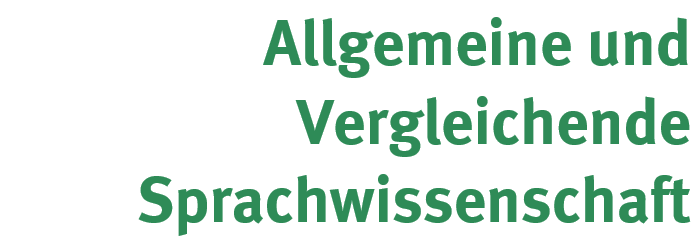

Münster
Schlossplatz 5, Festsaal
December 7-8, 2018
funded by DFG

Description
While most linguistic work in the past decades has routinely paid lip service to the fact that information packaging is a function of context and therefore rooted in discourse, information structure (IS) has rarely been studied as a discourse phenomenon sui generis. This lack of interest in the discourse roots of IS is a corollary of the strict top-bottom approach that has dominated the IS scene for decades. The categories are taken to be predefined and the role of the research is confined to the identification of the structures through which these purported categories are realised. On this view, the ways information is packaged over larger stretches of speech, its relation to intentionality of communication and the cognitive states of the interlocutors are irrelevant.
This workshop intends to look at IS from the opposite, bottom-up perspective. No a priori categories are assumed. Linguistically conveyed information can be structured so as to fit the assumptions about the hearer’s knowledge and attention, or it can be structured so as to render transparent rhetorical relations, or the current intentions of the speaker, or anything else that speakers consider relevant in communication, or a language happens to have grammaticalised. The task of the IS research is to trace down communicative and interpersonal factors that determine the decisions concerning the form in which the utterance is produced and deduce language-specific categories of IS from the identification of these factors.
We will attempt to uncover regularities of the relationship between IS and discourse, conceived broadly as anything that goes on between the interlocutors in the course of a linguistic interaction. The topics include the following:
- Discourse partition and IS: Are there structures that are regularly associated with certain positions in discourse, such as paragraph beginnings or ends, perspective switches, etc.?
- Rhetorical relations between utterances and IS: Is there a conventionalised connection between rhetorical relations such as elaboration, cause, parallelism, etc. on the one hand and certain types of IS configurations on the other?
- Intentional structure of discourse and IS: Do certain speaker intentions regularly trigger certain types of IS? Is there a tendency for some types of speech acts such as questions and answers, corrections, commands, etc. to be associated with certain IS strategies?
- Interpersonal stance and IS: Are some linguistic structures which appear to be IS-related also related to interactional aspects of the message, such as persuasion, hedging, or different types of politeness?
- Referent tracking and IS: How are discourse referents with different degrees of discourse relevance encoded and is there a conventional association between certain types of IS and certain types of discourse referents?
- Interlocutors’ mental states and IS: Does the speaker’s estimation of the current state of common ground have an impact on the way information is presented? For instance, do discourse referents that can be construed as discourse topics receive a different treatment from those that are episodic? Does contextual givenness play a role?
Provisional Programme: Friday, December 7
9.00–9.10 Dejan Matić Introduction 9.10–10.00 Andrew Kehler (invited speaker) A Bayesian model of pronoun production and interpretation 10.05–10.45 Nils Norman Schiborr Data-driven models of referential choice: Antecedent distance and beyond 10.50–11.30 Sonja Riesberg, Kurt Malcher & Nikolaus Himmelmann Reference tracking and voice choice in Totoli (11.30–12.00) coffee break 12.00–12.50 Geoffrey Haig (invited speaker) Optional definiteness in Balochi and Kurdish: conceptual and empirical issues (12.50–14.30) lunch break 14.30–15.10 Katja Hannß The subject clitics of Chipaya 15.15–15.55 Amos Teo Construction-specific interpretations of Sümi differential case marking (15.55–16.25) coffee break 16.25–17.05 Julian Schlöder Focus and tune in discourse 17.10–18.00 Dina El-Zarka (invited speaker) A probabilistic approach to the information structure-prosody interface: Themes in Egyptian Arabic Provisional Programme: Saturday, December 8


